Everybody can be a content creator these days. Just having a smartphone allows you to create videos and become an internet superstar, but what if you’re looking to step up your game and take it to the next level? Or if you want to take your YouTube,TikTok, IG career to a whole new ballgame? Then having a dedicated device that allows you to film high quality content will be key.
Of course you can just spend thousands of pesos and buy the best device you can, but that’s not in the cards for everyone. Frankly, you don’t even need to spend a lot, you just need to get the right device for you! Here are some of our suggestions on the best cameras for content creators at different levels.’
DJI Pocket 2
Let’s start here with something super small. You would be amazed at what you can do with this device. The DJI pocket 2 is a small hybrid gimbal and camera all in a form factor that’s just a bit bigger than your hands. If you’re looking for a camera that you can bring in your belt bag, whip it out and start recording then this one’s for you. The stabilization on this device is just second to none so you won’t have to worry about shaky selfie videos.
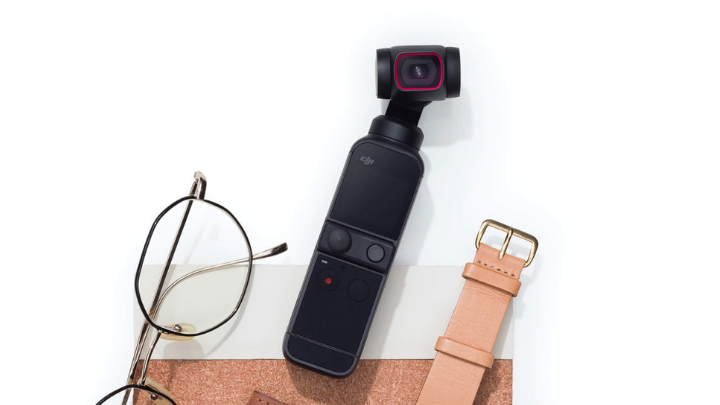
You can record on the DJI Pocket 2 up to 4K 60fps, it also comes with great battery life. It has 4 microphones built into the device and has Wi-Fi and Bluetooth monitoring so you can use your smartphone while recording. The video output is much better than most smartphones out there and the price isn’t so bad either. You can’t go wrong starting out with the DJI Pocket 2.
Sony ZV-1
While there is a newer “version” so to say of the Sony ZV-1 which is the ZV-E10, I’d like to suggest the ZV-1 to people more because it isn’t complicated to use. Unlike the ZV-E10 there’s no interchangeable lens here, just a single zoom lens that retracts into such a small form factor that it’s so easy to carry around and whip out anytime you need to shoot anything. The ZV-1 is the perfect choice for people who need a point and shoot high quality video camera. Sony built this camera specifically for vlogging and it doesn’t disappoint at all.
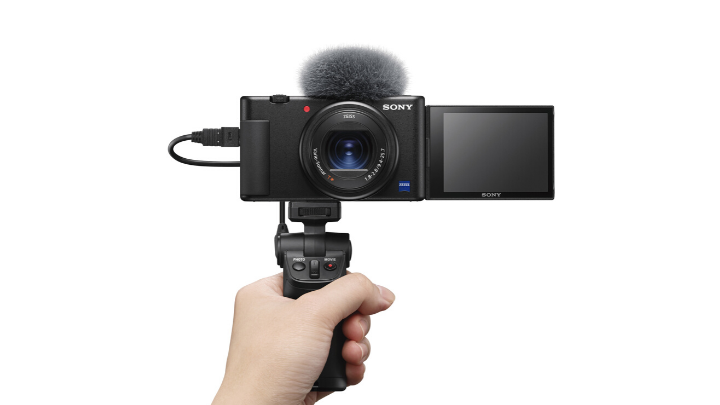
Sony has equipped the ZV-1 with a lot of vlogging essentials. For example, instead of a built-in flash, the company instead opted to place a built in high definition microphone on top. It also has a Vari-angle screen which you can use for those important selfie shots/videos. Lastly, it has a product video mode, which automatically and quickly focuses on whatever item that’s in front of you and quickly switches back to you when an item is not in focus. This works really well and super fast, so those with makeup blogs love this feature! It can shoot up to 4K 60fps and 1080p 120fps so it has more than anyone needs for a vlogging camera. Check out the Sony ZV-1 right here.
GoPro Hero 10
The GoPro Hero 10 is an action camera, but if you’re looking into a vlogging camera that you can take with you wherever you will go and survive anything you are planning for then this camera is for you. Using the new GP2 processor the Hero 10 can shoot a full 23MP and capture 5.3K video up to 60fps, 4K at 120fps and 2.7K at 240fps. This means you can shoot those super slow-mo action shots you’ve always wanted to try online. The quality is really super sharp and there’s almost nothing to complain about there.
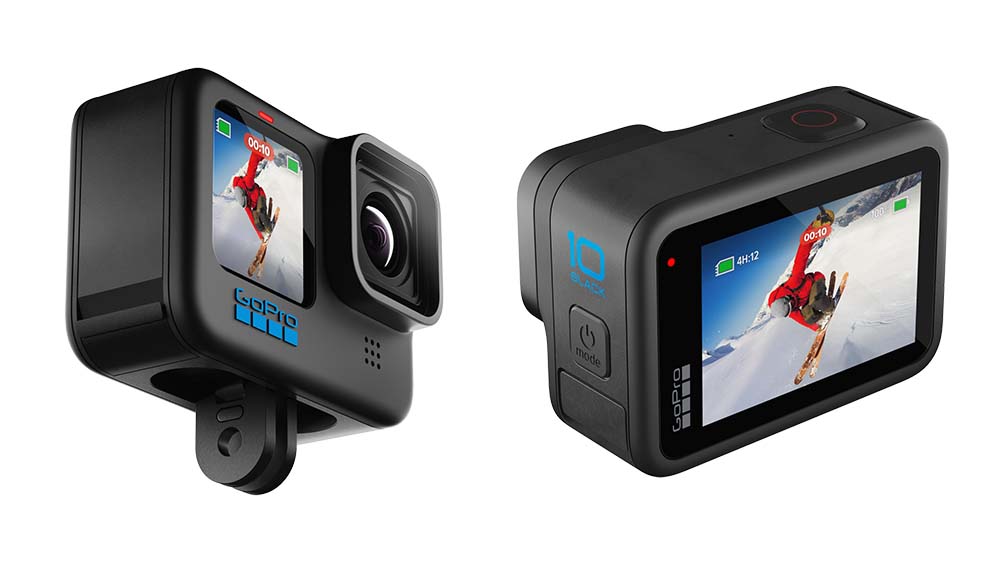
As for stabilization, the GoPro Hero 10 probably has one of the best digital image stabilization out there. They call it Hypersmooth 4.0 and it is just amazing what this technology can do. It feels like you are using a gimbal when you are using this camera, so for those sports aficionados out there who like to mount their cameras on a bike, or running, you won’t be disappointed. Lastly, you can even use the Hero 10 for time-lapse video shots, so if you want to capture those outdoor scenes throughout the day, the Hero 10 with its Hyperlapse and Nightlapse feature allows you to just leave the camera on and it’ll capture that time-lapse. This is especially true with the amazing weatherproofing of the camera so you won’t have to worry about leaving this camera outside. The GoPro Hero 10 is the perfect do it all small camera that you can bring around and not worry about anymore. The GoPro Hero 10 is available right here.
Panasonic Lumix G100
The Panasonic Lumix is a Micro Four Thirds mirrorless camera that’s designed for vloggers in mind. What I love about this camera is that it comes with EIS or electronic image stabilization which means that the camera can make your videos steady even if you are moving around. And once you pair that with the Self Shot mode of the camera which uses really fast face detection and audio tracking mode which follows you as you are walking around then you have the perfect vlogging camera!

The camera can shoot up to 4K 30FPS and 1080P at 120FPS. It also comes with a fully articulating display that allows you to use the camera in different ways. Just do note that when you are shooting at 4K the image is cropped here so you have to plan ahead for that as it will really zoom into your face in this mode. Recording time at 4K is at 10 minutes per video and around 30 minutes at 1080p. Check out the Lumix G100 here.
Fujifilm X-S10
Now we’re going a step further into interchangeable lens cameras. Let’s start with one of my favorites, the Fujifilm X-S10. The X-S10 is a different beast from all the other Fujifilm cameras out there, it does not give you the classic Fujifilm analog dials but instead give you a more current PASM dials which most camera manufacturers have. Fuji purists may scoff at this idea as they usually want all the manual controls at their disposal. For regular users who want to get into the Fuji ecosystem with all the Fuji color science it brings then the X-S10 is the perfect entry point if you’re getting into serious vlogging or even photography.
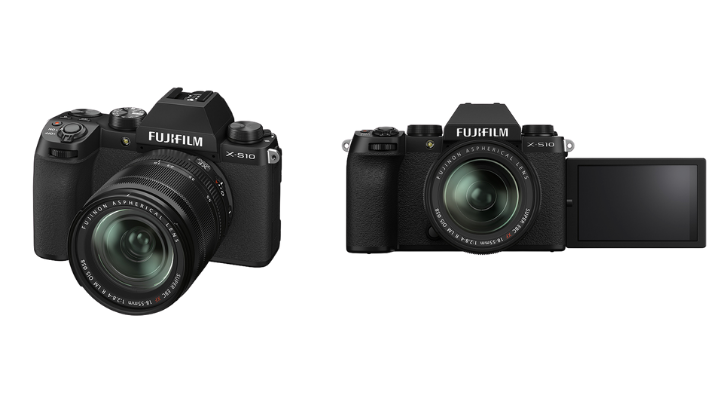
The X-S10 features a vari angle screen which you can use to vlog, a sharp electronic viewfinder and a very useful grip. For such a small body as the X-S10, that grip is a godsend when using the camera as it allows you to shoot steady videos. Apart from that the Fujifilm X-S10 is basically a smaller version of the flagship XT-4 with some compromises. It has a smaller battery and one memory card slot to name a few things it doesn’t have compared to its bigger sibling, but it features the same X-Trans sensor of its older brother which allows you to capture beautiful videos. Speaking of beautiful video, you can use the built in Acros film simulation to get the movie or cinematic effect in your videos without delving deep into F-log and other more technical settings. Check out the X-S10 right here.
Panasonic Lumix S5
The Panasonic Lumix S series is widely regarded by a lot of content creators and videographers as a great line of cameras. We are taking a step up here versus the other choices on the list because this one is for serious content creators. For the tech heads out there, it features a 24MP full-frame mirrorless sensor, which compared to the cropped sensor of the previous choices gives you the entire picture here. It crams so much tech inside this small body that you would be surprised at the capabilities of this camera. It features dual SD card slots, an OLED electronic viewfinder, a 3-inch fully articulating touchscreen and you can have great battery life.

Yes, it may be quite expensive, but the amount of tech here for videographers and content creators will make most people jealous. It can capture 10-bit DCI and 4K video up to 30fps with 10-bit 4:2:2 color. It has professional level tools that you can use if you want to delve deeper into the settings such as waveform and vectorscope display, shutter angle ,dual zebras, and the ability to upload custom LUTs to your camera. It has the dual gain sensor that delivers dynamic range at low ISO settings, and you also have a variable frame rate that lets users switch from high frame rates to low ones to slow down or speed up your footage. Lastly though, most shooting modes feature unlimited times but some only offer a 30 minute recording limit so do take note. If you want to know more, check it out here.
Fujifilm X-H2s
Now we’re in high-end territory with the new Fujifilm X-H2s. It features a 26MP sensor that can shoot up to 6.2K video. For people invested into the Fujifilm ecosystem and want to step up their video game then you really need to take a serious look at the X-H2s. You can shoot 4K 120fps videos with no overheating and no recording time limits. You can also record internal ProRes or external RAW to external recorders using the full-sized HDMI port on the body.
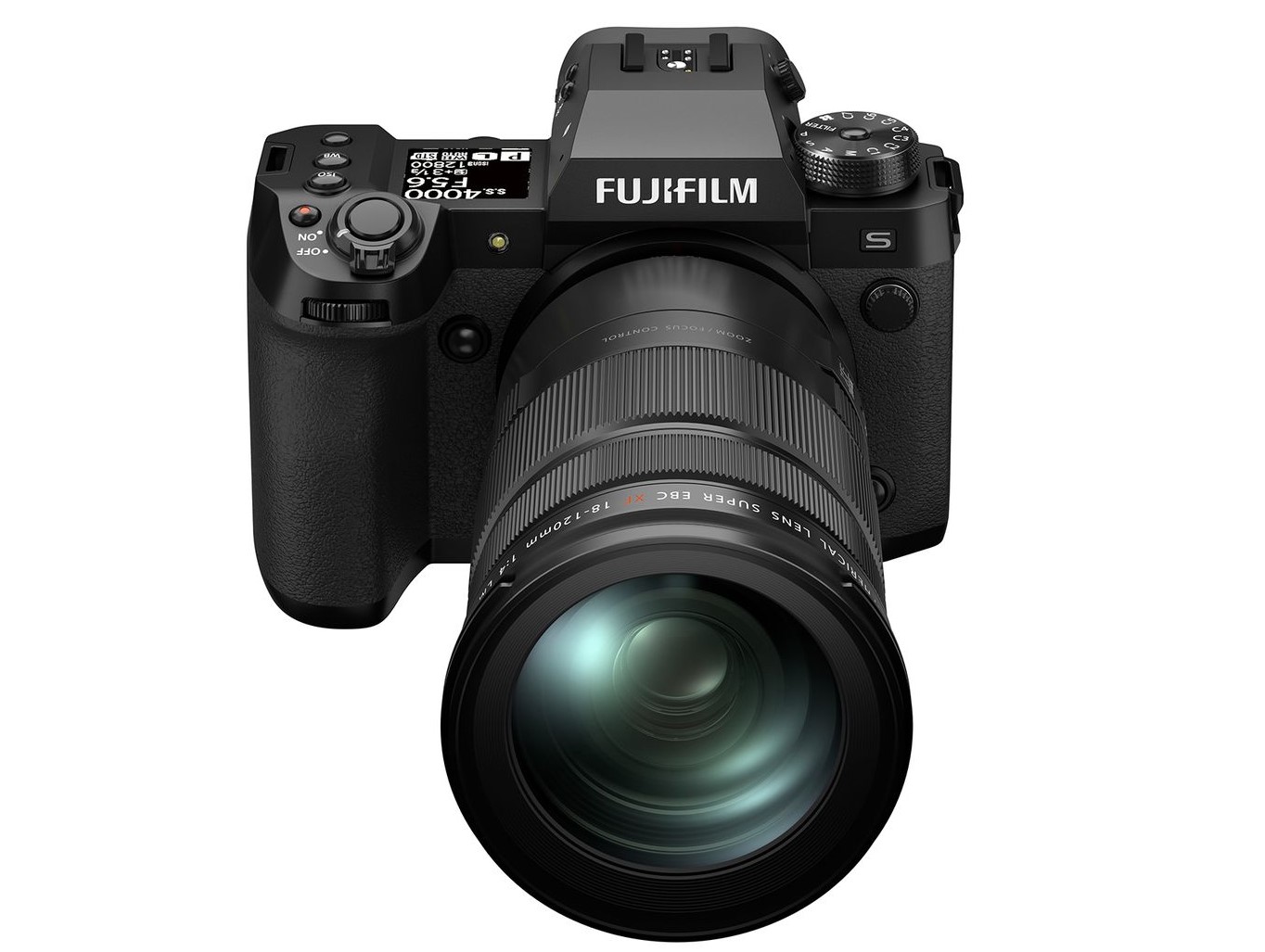
If you also compare this to previous Fuji models, the autofocus is where the X-H2s stand out from the pack. The camera really improves on the sometimes sluggish autofocus of the Fuji ecosystem and the tracking is way better than ever before. You can also record 4-channel audio with this device. The new Stacked CMOS sensor on the camera allows the camera to capture full-resolution images at up to 40 frames per second. Fuji says that this new stacked sensor is 3.6x faster than the ones on the X-T3 and X-T4, and 65% faster than the previous processor of those cameras. It also has a new mechanical shutter that gives users a maximum burst rate of 15fps and is now rated to last over 500,000 shots. So if you guys are really serious about content creation, or if this will be your main source of income then the Fujifilm X-H2s should be one at the top of your list. For more information click here!
Sony A7 IV
The fourth generation of Sony’s exalted a7 series brings in serious power for serious money, it may have everything a videographer would want in a content creation camera and more. It is a step up in every way from the previous version and with people still using the previous A7 III then the new one really is a knockout! It features a new 33MP BSI-CMOS sensor, a new autofocus system (which is silly because Sony already has one of the best autofocus systems in the market), a fully articulating screen for vlogging, and a whole lot more of new features.
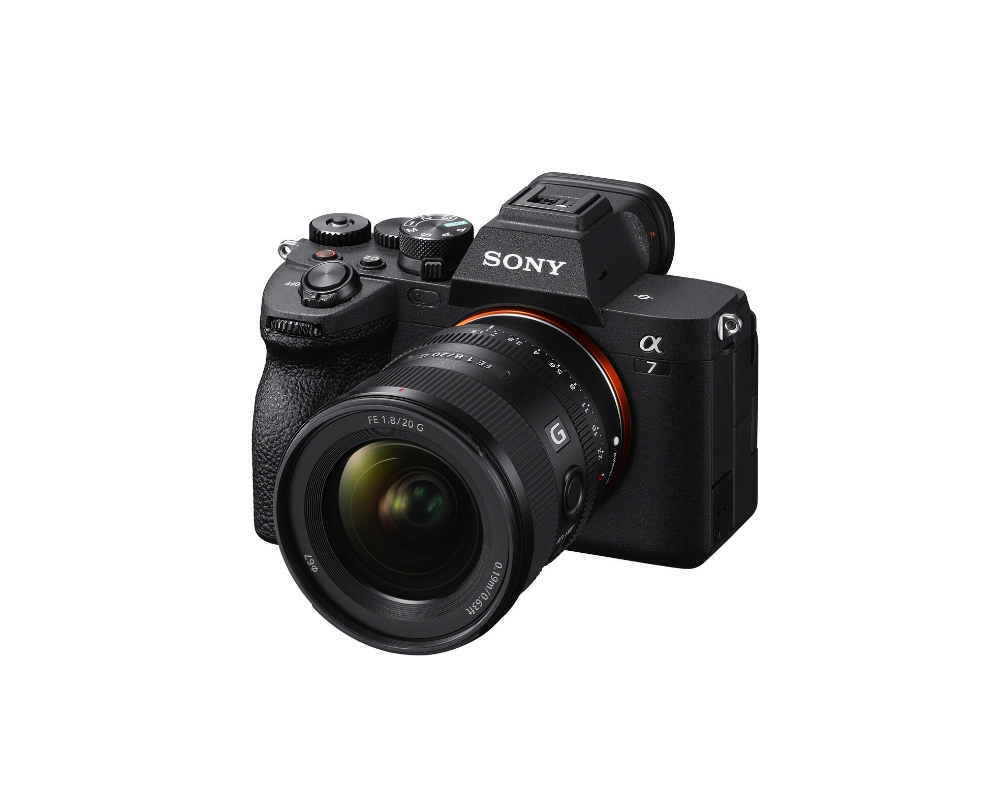
Users can capture up to 4K 60fps video up to 10-bit so users can have more flexibility with their S-Log footage. The camera’s IBIS or in-body image stabilization goes up to 5.5 stops of compensation, so it allows you to shoot steady videos. The Sony A7 IV is a definite step up from its previous generations and is probably the best mirrorless camera you can buy today full stop, of course, if you have the budget for it. Check it out here!
iPhone 13
I just had to save this for last as you don’t even need a dedicated camera to achieve great video. Apple’s iPhone 13 series just takes smartphone camera videography to a different level versus the competition. There’s so much tech in this device for videographers that it seems crazy to talk about it a few years ago. Users can use the camera to record in Dolby HDR which just increases the quality of the colors that you see on screen (given that you are looking at it with an HDR compatible device). Cinematic mode creates a shallow depth of field effect for video, that yes, can be seen on Android phones, but as they say, Apple does it better. The Cinematic mode for the iPhone is truly second to none.
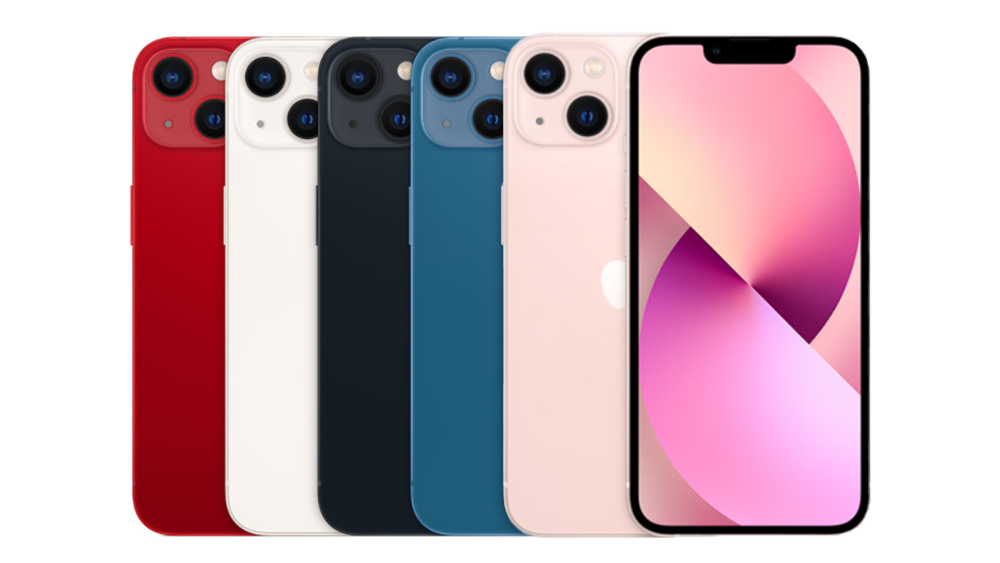
Users can also record slow-mo video up to 240fps, it has a time-lapse mode and so many more other options. If you need a device that just does that job, or you don’t want to think about the more technical things such as editing, file transfers, etc, then the iPhone is for you. This device just does what it does so well that users will choose the ease of this phone versus having a separate device to record their videos. So if you want something all-in-one for video and for your daily life then the iPhone 13 series is definitely for you. You can check out all the features of the iPhone 13 here.
Conclusion
So, we’ve given you our suggestions for the best content creator cameras out there! But as always, with all the technical jargon we’ve written, you gotta remember that the most important thing is to go out and shoot. It’s the user that will determine how good your shots will look. You can have the most expensive camera out there but without honing your craft, putting some time in it then it ends up as just a tool. So go out there guys! We can’t wait what you guys come up with.
Do you guys have any other camera suggestions? Let us know! Leave us a comment down below.
Source: Yugatech

No comments:
Post a Comment